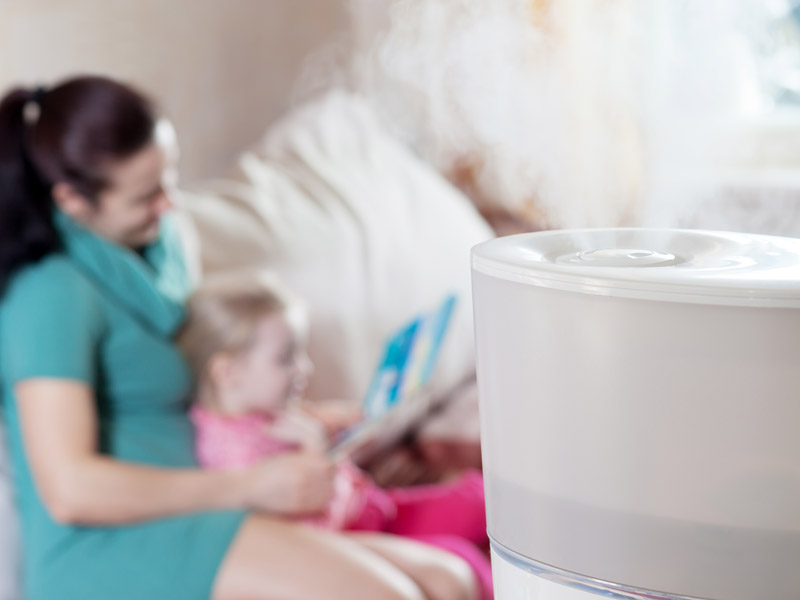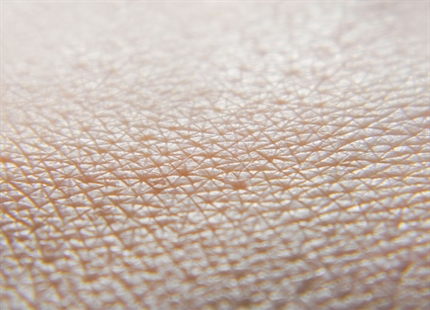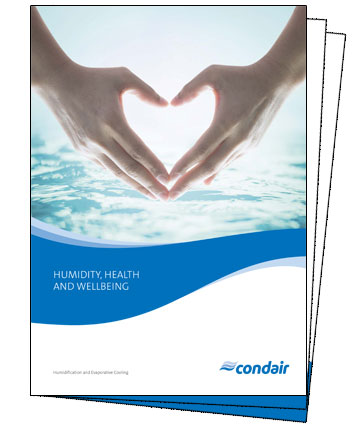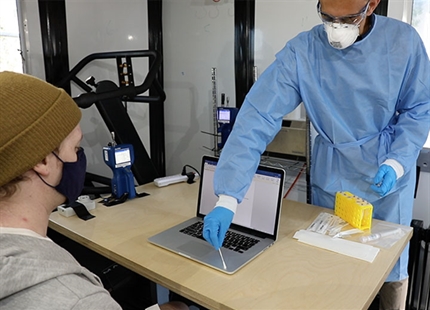Published: Sep 2010 | Environmental Health. 2010;9:55. doi:10.1186/1476-069X-9-55.
Modeling the airborne survival of influenza virus in a residential setting: the impacts of home humidification
Myatt T.A. et al 2010
Background
Laboratory research studies indicate that aerosolized influenza viruses survive for longer periods at low relative humidity (RH) conditions. Further analysis has shown that absolute humidity (AH) may be an improved predictor of virus survival in the environment. Maintaining moisture levels that reduce survival of the virus in the air and on surfaces could be another tool for managing public health risks of influenza.
Methods
A multi-zone indoor air quality model was used to evaluate the ability of portable humidifiers to control moisture content of the air and the potential related benefit of decreasing survival of influenza viruses in single-family residences. We modeled indoor AH and influenza virus concentrations during winter months (Northeast US) using the CONTAM multi-zone indoor air quality model. A two-story residential template was used under two different ventilation conditions - forced hot air and radiant heating. Humidity was evaluated on a room-specific and whole house basis. Estimates of emission rates for influenza virus were particle-size specific and derived from published studies and included emissions during both tidal breathing and coughing events. The survival of the influenza virus was determined based on the established relationship between AH and virus survival.
Results
The presence of a portable humidifier with an output of 0.16 kg water per hour in the bedroom resulted in an increase in median sleeping hours AH/RH levels of 11 to 19% compared to periods without a humidifier present. The associated percent decrease in influenza virus survival was 17.5 - 31.6%. Distribution of water vapor through a residence was estimated to yield 3 to 12% increases in AH/RH and 7.8-13.9% reductions in influenza virus survival.
Conclusion
This modeling analysis demonstrates the potential benefit of portable residential humidifiers in reducing the survival of aerosolized influenza virus by controlling humidity indoors.
Discussion
Results from this modeling analysis demonstrate that the use of portable residential humidifiers increases RH and AH to levels that can potentially decrease the survival of airborne influenza virus in a residential setting. This effect is more pronounced in rooms where the humidification is located. While this study evaluated the impacts in a residential setting, the expected benefits of humidification are likely to be larger in places where larger populations of people with the flu and people susceptible to the flu congregate.

Dry air and airborne infection
Low humidity acts as a conduit for viruses and airborne bacteria to disperse and travel around a building and threaten all occupants.
Read moreDry air and our airway defence system
Low humidity dries our mucous membranes and inhibits our body's natural defence against airborne germs, viruses and bacteria.
Read moreDry air and our skin
Low humidity dries the outer layer of our skin leading to itchiness, cracking and dermatological problems.
Read moreDry air and our eyes
Low humidity dries our eyes' precorneal tear film making us prone to eye irritations and contact lens discomfort.
Read more














